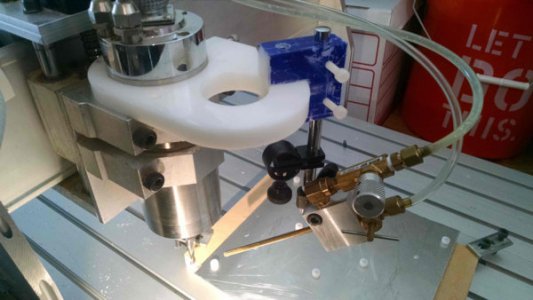- Joined
- Nov 28, 2013
- Messages
- 197
Somewhere on the web there must be advice on how to determine how much cut is possiblle in milling aluminum on a 6040 cnc router. But I can't figure out how to find it. And no, it may be Chinese but it's well made, and has performed quite well to date.
I think I've absorbed the guidance on figuring speeds and feeds, and not only that, I rented Bob Warfield's very comprehensive CNC G-Wizard. It appears that his algorithms are based in part on tool deflection limits. But on my machine, I suspect I could get stepper stalls before I bend the tool deflection anywhere near his limit. And worse, it could cause missed steps not to be detected until the next pass.
I've been cutting plywood to make ribs for r/c aircraft, formers too. It's worked brilliantly. I've also cut a lot of HDPE to make glue-up fixtures and that's worked well too. But now I need to cut some aluminum and am confounded by the question above. I suppose I could use half the step depth G-Wizard recommends and assume that will lighten the load enough to keep the steppers stepping. For example .010 steps instead of .025 seems good. And I have plenty of time, although at 75, maybe not all that much time.
Does this make sense to any of you and if so where should I loook?
I think I've absorbed the guidance on figuring speeds and feeds, and not only that, I rented Bob Warfield's very comprehensive CNC G-Wizard. It appears that his algorithms are based in part on tool deflection limits. But on my machine, I suspect I could get stepper stalls before I bend the tool deflection anywhere near his limit. And worse, it could cause missed steps not to be detected until the next pass.
I've been cutting plywood to make ribs for r/c aircraft, formers too. It's worked brilliantly. I've also cut a lot of HDPE to make glue-up fixtures and that's worked well too. But now I need to cut some aluminum and am confounded by the question above. I suppose I could use half the step depth G-Wizard recommends and assume that will lighten the load enough to keep the steppers stepping. For example .010 steps instead of .025 seems good. And I have plenty of time, although at 75, maybe not all that much time.
Does this make sense to any of you and if so where should I loook?
Last edited:

